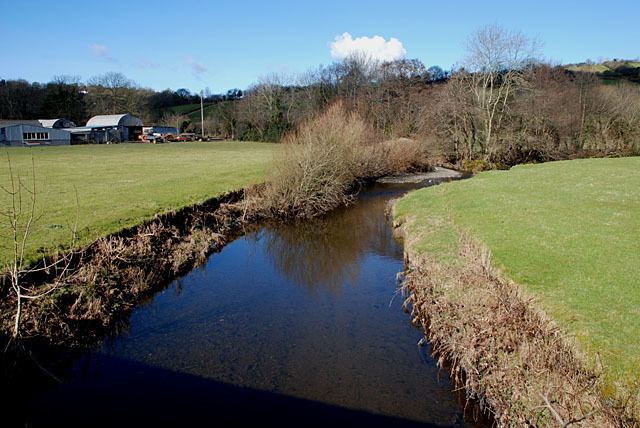Population 874 Community Llangeitho Country Wales Local time Thursday 11:23 AM | OS grid reference SN679597 Sovereign state United Kingdom Dialling code 01974 | |
 | ||
Weather 7°C, Wind NE at 23 km/h, 79% Humidity | ||
Llangeitho is a village and community in Ceredigion, Wales, that lies on the upper river Aeron about 6 kilometres (3.7 mi) west of Tregaron and 11 kilometres (6.8 mi) north of Lampeter. It had a population of 874, which fell to 819 at the time of that 2011 Census.
Contents
Map of Llangeitho, Tregaron, UK
Methodist centre
The village is primarily associated in history with the name of Daniel Rowland (born in the village in 1713) and the Welsh Methodist revival of the 18th century. Rowland served as curate at Nantcwnlle and Llangeitho. The village's chapel, built in 1760, became famous throughout Wales as a Methodist centre, and thousands of people visited it to listen to the preaching. Rowland was buried in the village and there is a memorial column to him. Two more chapels were built, in 1764 and 1814, to replace the original chapel.
The village witnessed many periods of religious revival throughout that century, but the most powerful was that of 1762, when rejoicing, dancing and jumping for joy were seen. This event earned the Welsh Methodists the name "Jumpers". William Williams Pantycelyn wrote in defence of the celebrations.
Language
The village was long considered as a stronghold of the Welsh language, but the 1970s saw an influx of people from outside Wales, mainly from England, and the percentage of Welsh speakers decline from 83% in 1971 to 55% ten years later. The census figure for 2001 was 57%.
The noted 17th-century poet and minstrel Dafydd Llwyd Mathau is thought to have come from the Llangeitho area.
At the edge of the village is the mansion of Cwrt Mawr, where the antiquary J. H. Davies assembled a valuable collection of Welsh language manuscripts known as the Cwrtmawr manuscripts, which Davies gave to the National Library of Wales, where it can now be found.
Church
The village church, situated on the north side of the village, is an ancient one, but the first substantive reference to it is from around 1900: the pretty medieval double screen and the old wooden stairs leading up to the gallery were destroyed.
The church and parish are named after St Ceitho, and St Ceitho's Spring is nearby: its water is said to be cool in summer and warm in winter.
Governance
Llangeitho gained a seat on Cardiganshire County Council in 1889. An electoral ward of the same name exists. This extends to part of the neighbouring communities, with a total population of 1,459.
